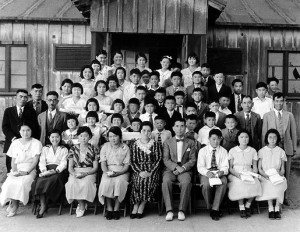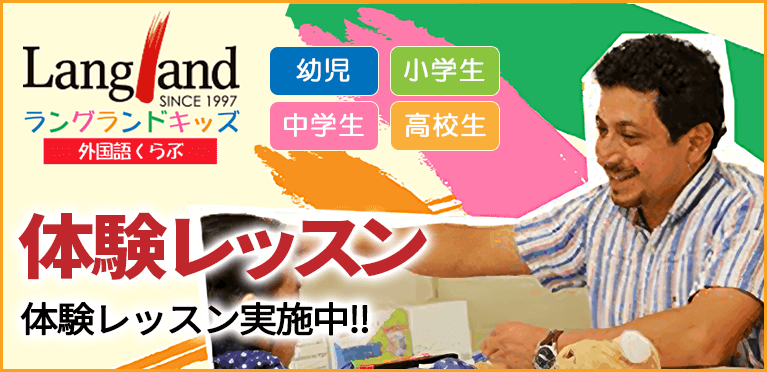WaiWaiブログ
A short history of Japanese Americans
2012/08/18

(This picture is of a Japanese language school in California around 1935.)
My great-grandfather went to America one hundred years ago. I don't know what kind of job he did. Maybe he worked on a farm or helped build the railroads in the American west. He started a family, saved his money and one day returned to his family home in Yamaguchi prefecture. His sons stayed in California. Then my father was born and then I became the fourth generation of my Japanese American family.
Japanese people living in America call themselves Nikkei. The first generation of immigrants came for work. They settled mostly in Hawaii, California and the American west coast. They worked on plantations or as farmers. Some were fishermen and some worked on the railroads. They spoke very little English and kept many of the traditions they grew up with in Japan. Many hoped that they would one day return to Japan. My great-grandfather returned, but many stayed.
The second generation is known as Nisei. They were born in America before World War II. They grew up as Americans but at home they spoke Japanese, ate rice with chopsticks and heard stories about life in the old country. My grandfather learned kendo, but baseball was also popular with many Nisei boys.
In 1941 the Japanese Navy attacked Pearl Harbor and war with Japan changed the lives of all the Nikkei. In California, Washington and Oregon all the people of Japanese ancestry were ordered to leave. Most of them had no place to go and were sent to camps set up in the mountains and deserts. This was a dark time for my family. My grandfather was Japanese but also American. Should he stay in a country that didn't want him or go to a country he barely knew?
After the war, my family had lost everything and had to start all over again. The Nikkei went back to west coast and rebuilt their homes, businesses and communities. They started new families and their children were called Sansei. Unlike the Nisei, the third generation grew up without learning much about their Japanese roots. They used forks instead of chopsticks and they spoke only a few words of Japanese that they heard from ojichan like "baka" and "chotto matte." The Sansei looked Japanese but struggled with trying to prove that they were Americans.
I am fourth generation Japanese American. Both my father and mother are Japanese, but many people ask me if I am half. Today, it is common for Nikkei to marry with a non-Japanese person. While the fourth and fifth generations are becoming less Japanese in appearance, we have many chances to learn about Japan. Japanese restaurants are very popular in America, many communities have Japanese culture festivals, kids watch anime and Japanese television shows on the Internet and it is easy to travel to Japan. In the next blog I will write about Nikkei culture. Thanks for reading!
Questions:
What is Nikkei?
Where did most Japanese live in America?
What happened to Nikkei during World War II?
新着情報
-
クリスマスの歌
2019/12/12 -
"英語&フランス語で話そう!!"報告♪
2019/12/12 -
Langland Christmas Party 2014 の様子をお届けします♪
2014/12/09 -
TOEIC SW IPテスト 9月からスタートしました!
2014/09/22 -
DELE B1検定対策コース:渋谷校で9/16(火)よりスタート!
2014/09/16
バックナンバー















